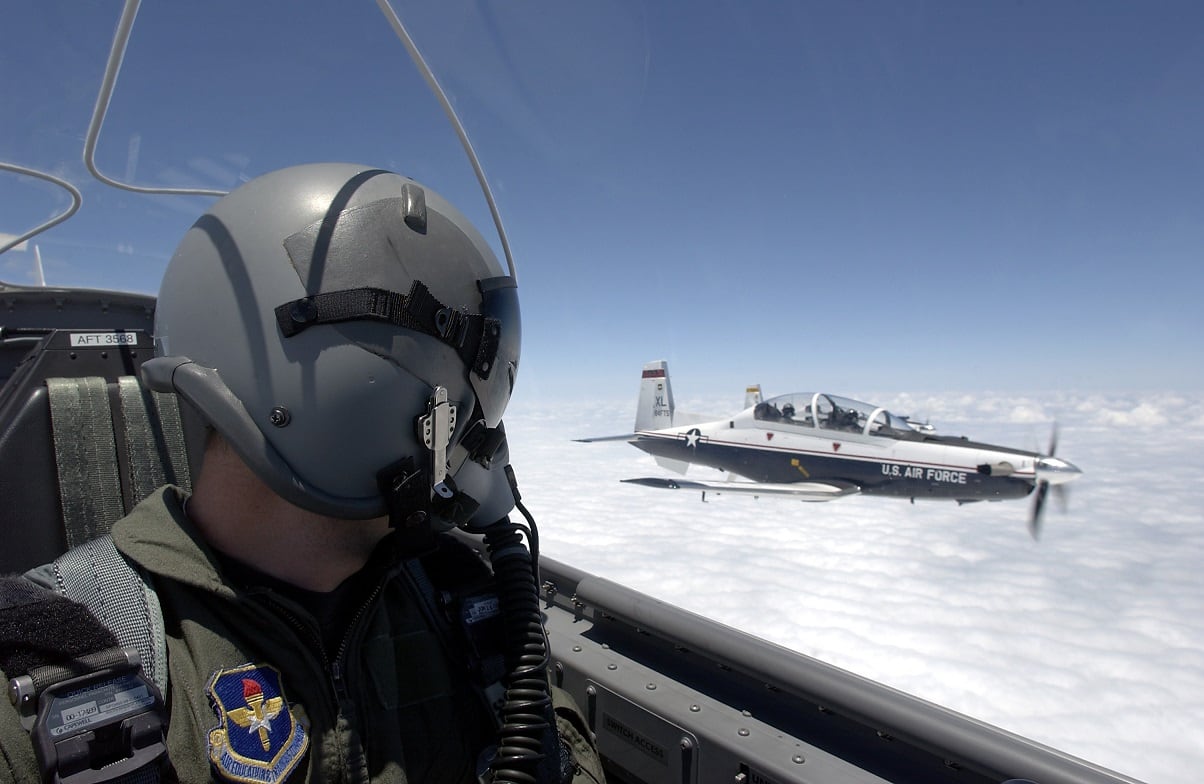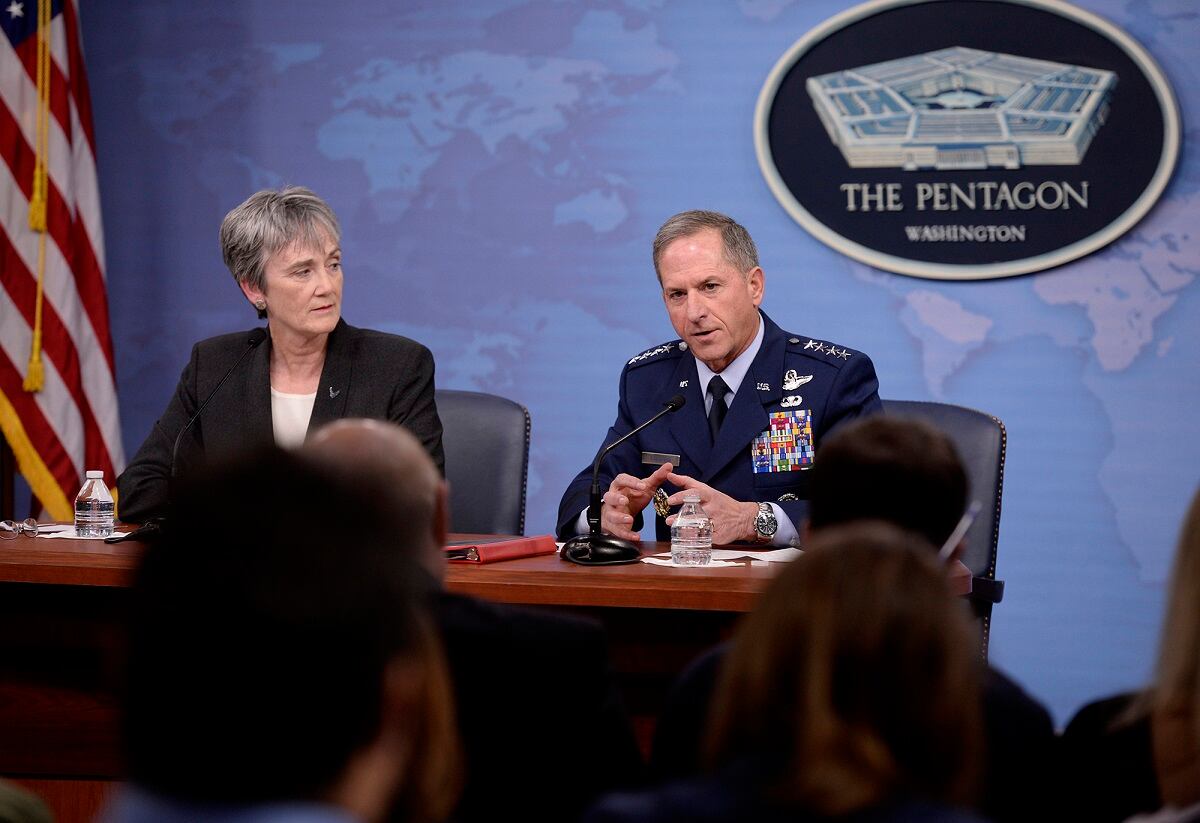The Air Force still hasn’t found what is causing an ongoing series of incidents involving hypoxia and other unexplained physiological events in its airplanes, Gen. Dave Goldfein, the chief of staff, told lawmakers Tuesday.
“We don’t have the smoking gun yet,” Goldfein said during a Senate Armed Services Committee hearing, “And we’re not going to stop until we find it.”
Goldfein said the Air Force is fairly confident it has identified the aircraft parts with the highest break rates that are contributing to the physiological incidents. But the root cause remains a mystery.
Airmen flying the T-6 Texan II trainer have reported 12 physiological events since March 1. Air Education and Training Command’s 19th Air Force, which trains airmen in the T-6, previously grounded its entire Texan fleet for nearly all of February after 13 pilots at three bases experienced unexplained physiological events during the last week of January.
RELATED

Air Force Secretary Heather Wilson, who also testified at the hearing, said the Air Force took out the oxygen systems from its T-6 trainers and rebuilt them to try to find what was wrong. More than 270 T-6s are now back in the air, she said.
Meanwhile, the Air Force is working with the Navy ― which has had its own hypoxia problems ― and NASA to try to find the cause of the hypoxia and other physiological events, Wilson said. And Goldfein noted that the service has consulted with engineers, physiologists and operators of the aircraft in an effort to fully understand the problem.

The Air Force also set up a safety investigation board in recent weeks, Wilson said, to try to get pilots and maintainers to provide more information without consequence.
Sen. Joni Ernst, R-Iowa, urged the Air Force ― and the military ― to keep looking for what is causing these problems.
“The fact that we have not been able to find the root cause is very disturbing,” she said.
Ernst asked if the Air Force is studying potential causes other than mechanical issues, including physiological issues such as pilots drinking too much coffee before flying.
Goldfein said the Air Force learned a lot from studying physiological problems in the F-22 a few years ago. The Air Force first went through the Raptors, subsystem by subsystem, he said. But once it began looking at the plane’s entire ecosystem ― including the pilot ― it realized it wasn’t dealing with hypoxia, but instead hypocapnia.
Hypocapnia has similar symptoms to hypoxia, such as dizziness and confusion. But instead of having too little oxygen in the blood, which is the cause of hypoxia, hypocapnia is caused by too little carbon dioxide.
Similarly, Goldfein said, the Air Force is now looking at the entire ecosystem of the T-6, including pilots.
Restructuring squadrons
Wilson told Sen. Elizabeth Warren, D-Massachussetts, that the Air Force plans to release by August a “strategic roadmap” outlining what kind of a squadron structure it needs.
The Air Force now has about 300 operational squadrons, including fighters, bombers, and intelligence, surveillance and reconnaissance, Wilson said. Service officials are now looking at what it needs to carry out the new National Defense Strategy, which focuses on the ability to compete with other great powers, such as Russia and China.
The review will likely show the Air Force needs more force structure than it currently has, she said. The number of fighter squadrons in the Air Force ― active duty, Guard and Reserve ― has shrunk from 134 to 56 since the Gulf War, she said. At the same time, the service’s operations tempo over the Past 27 years has remained high, stressing its airmen.
Stephen Losey is the air warfare reporter for Defense News. He previously covered leadership and personnel issues at Air Force Times, and the Pentagon, special operations and air warfare at Military.com. He has traveled to the Middle East to cover U.S. Air Force operations.
